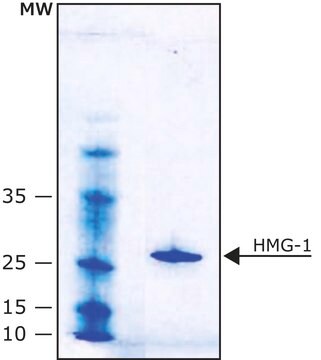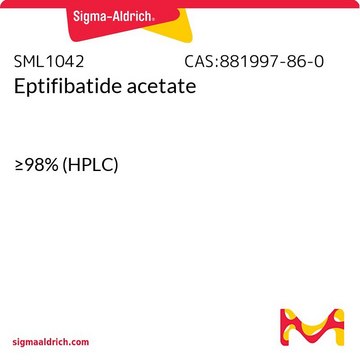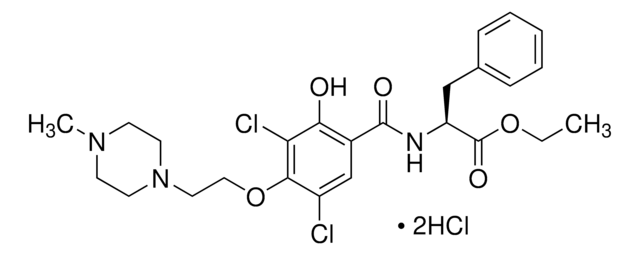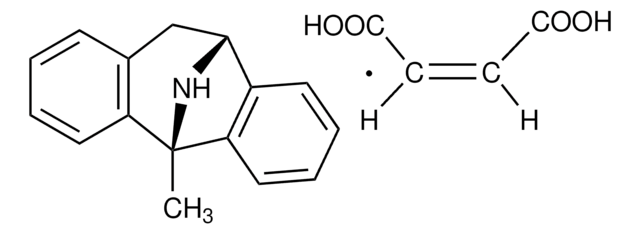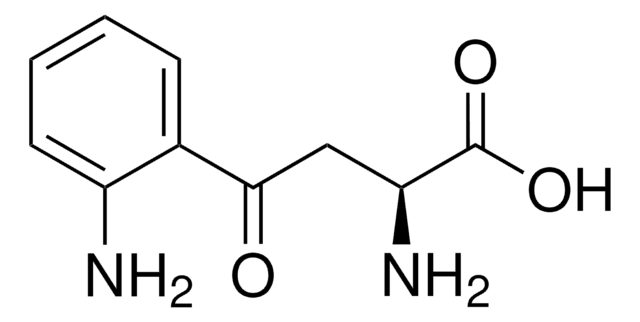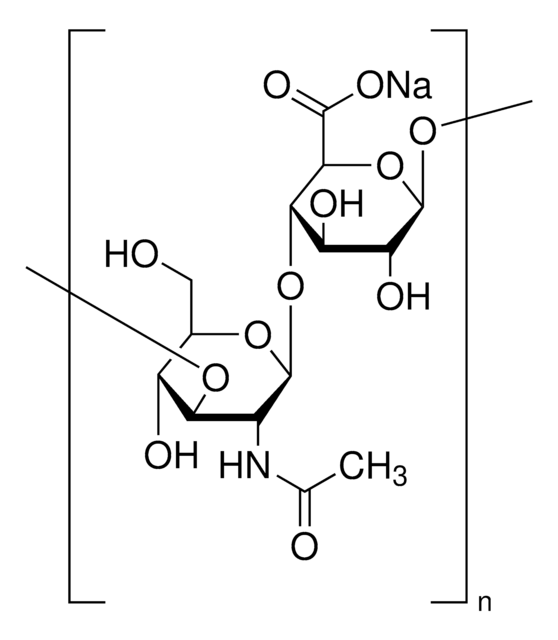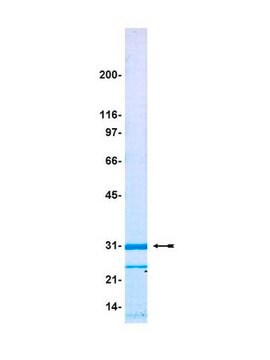SRP6265
HMGB1/HMG1 human
recombinant, expressed in HEK 293 cells, ≥95% (SDS-PAGE)
Synonym(e):
HMG1, HMG3, HMGB1, SBP-1
About This Item
Empfohlene Produkte
Biologische Quelle
human
Rekombinant
expressed in HEK 293 cells
Markierung
6-His tagged (C-terminus)
Assay
≥95% (SDS-PAGE)
Form
lyophilized powder
Wirksamkeit
0.22 μg/mL
Mol-Gew.
calculated mol wt 25.7 kDa
observed mol wt 28 kDa (DTT-reduced. Protein migrates due to glycosylation. Phe17 is the predicted N-terminus.)
observed mol wt 32 kDa
Verpackung
pkg of 10 μg
Verunreinigungen
<1 EU/μg endotoxin (LAL test)
UniProt-Hinterlegungsnummer
Versandbedingung
wet ice
Lagertemp.
−20°C
Angaben zum Gen
human ... HMGB1(3146)
Allgemeine Beschreibung
Anwendung
Biochem./physiol. Wirkung
Physikalische Form
Rekonstituierung
Lagerklassenschlüssel
11 - Combustible Solids
WGK
WGK 3
Flammpunkt (°F)
Not applicable
Flammpunkt (°C)
Not applicable
Analysenzertifikate (COA)
Suchen Sie nach Analysenzertifikate (COA), indem Sie die Lot-/Chargennummer des Produkts eingeben. Lot- und Chargennummern sind auf dem Produktetikett hinter den Wörtern ‘Lot’ oder ‘Batch’ (Lot oder Charge) zu finden.
Besitzen Sie dieses Produkt bereits?
In der Dokumentenbibliothek finden Sie die Dokumentation zu den Produkten, die Sie kürzlich erworben haben.
Kunden haben sich ebenfalls angesehen
Unser Team von Wissenschaftlern verfügt über Erfahrung in allen Forschungsbereichen einschließlich Life Science, Materialwissenschaften, chemischer Synthese, Chromatographie, Analytik und vielen mehr..
Setzen Sie sich mit dem technischen Dienst in Verbindung.